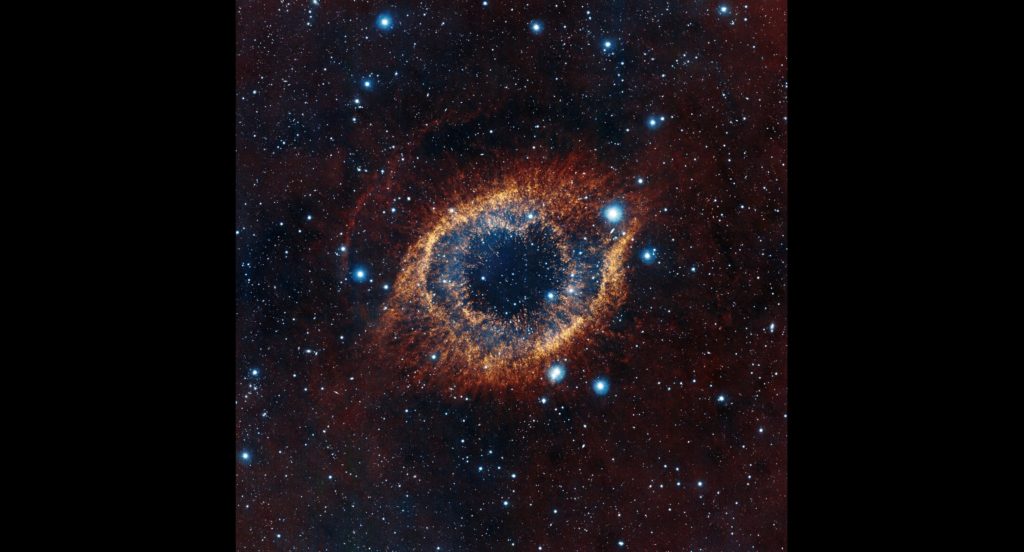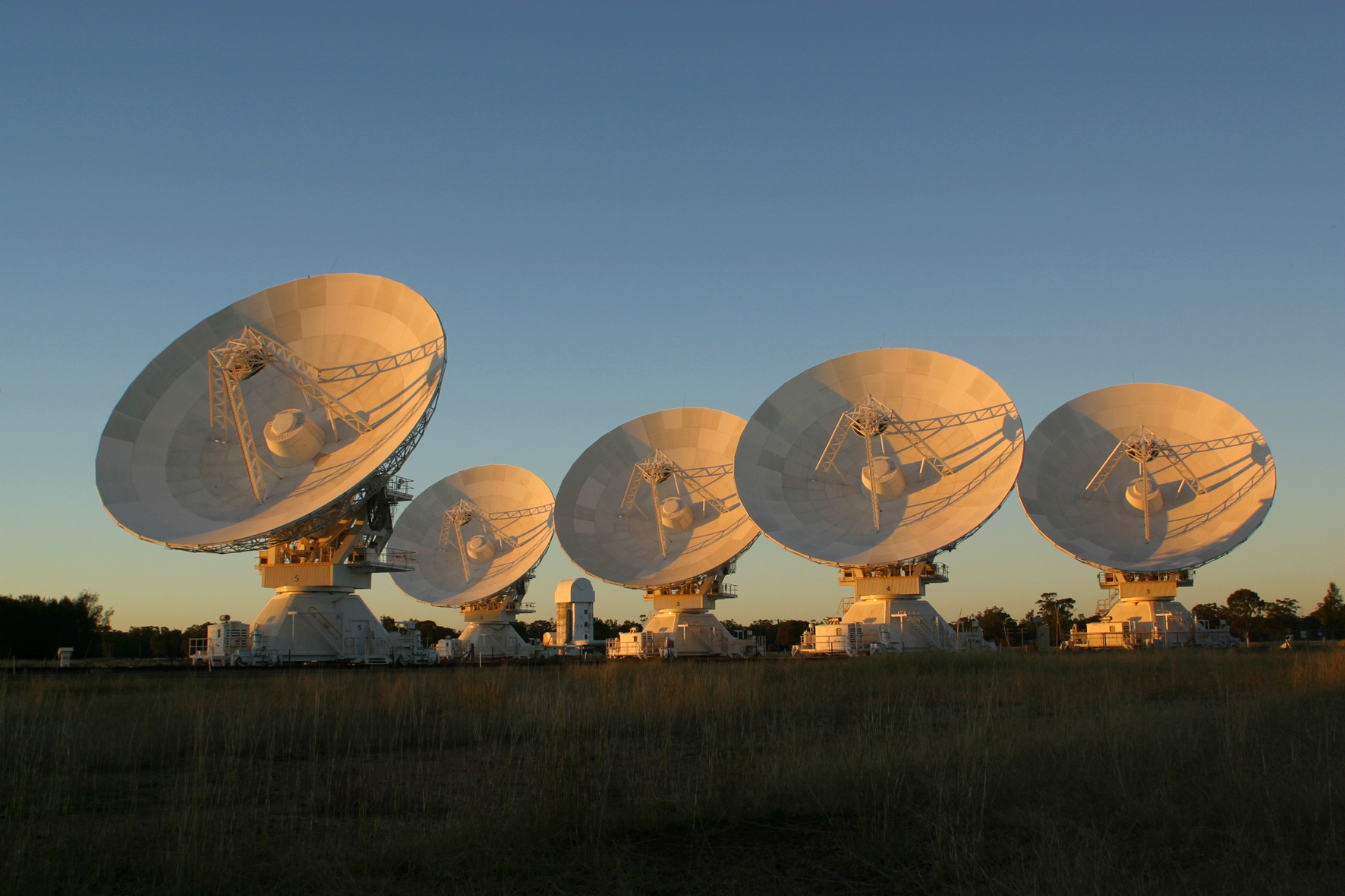Looking at the radio emissions from distant quasars, which appear to twinkle, researchers from Many Astrophyics have found what they think might be the answer: hairy stars.
The Helix Nebula, imaged with the European Southern Observatory’s VISTA telescope. ESO/VISTA/J. Emerson. Acknowledgment: Cambridge Astronomical Survey Unit.
Astronomers working with our Compact Array telescope are beginning to suspect more and more stars of hiding a secret.
We hadn’t noticed until now, but these stars may be ‘hairy’ – surrounded by a ‘mane’ of gas tendrils.
Astro-sleuth Mark Walker (Manly Astrophysics) and his team came to the some-stars-are-hairy idea after using the Compact Array to study radio waves from distant, powerful galactic bodies called quasars.
Credit: M. Walker (artwork), CSIRO (photo)
Quasars emit radio waves, but by the time they reach us on Earth, they have different properties — dimming and brightening rapidly. It seems something in space is making quasars twinkle. Quasar twinkling was first seen 30 years ago but until now its cause was a mystery.
Mark and the team were observing a quasar near a bright, hot star called Spica, which lies in the constellation Virgo, and saw that it, too twinkled.
Looking back at two other cases of quasar twinkling, observed with the Compact Array and other telescopes, the team found that they too occurred near hot stars: Vega (in the constellation Lyra) and Alhakim (in the constellation Centaurus).
The chance of this happening at random is just one in ten million, the researchers say.
So how are these hot stars linked to the quasars’ twinkling?
By looking at the twinkling pattern, the astronomers were able to work out that the twinkling is caused by long, thin streams of gas radiating outward from the star.
We already know one star that looks like this! It’s in the Helix Nebula, in the constellation Aquarius (as in the feature image).
Here, a star is surrounded by globules of hydrogen gas, each about as big as our solar system. The ‘hair’ is created when UV radiation from the star blasts gas off the globules, creating long, thin streams.
While the star in the Helix is old, younger stars might have these streams too, the researchers say.
Their findings have been published in The Astrophysical Journal.
CSIRO’s Australia Telescope Compact Array. Image: D. Smyth.





24th July 2017 at 10:39 pm
My son is fascinated by space at the moment. Every book her borrows is stars, galaxy, black holes. We read every night and it blows my mind what he knows and freaks me out a little – really are we spinning around in our galaxy at 800,000 km / hour!? But I bet he doesn’t know about hairy stars. He will tomorrow night. Thank you xo 🙂
14th July 2017 at 3:30 pm
Re: Hairy Stars, for a moment I thought you were taking about Billy Connolly
Pingback: ‘Hairy stars’ may be roaming our galaxy – MeasurementDataBases for Industry & Science